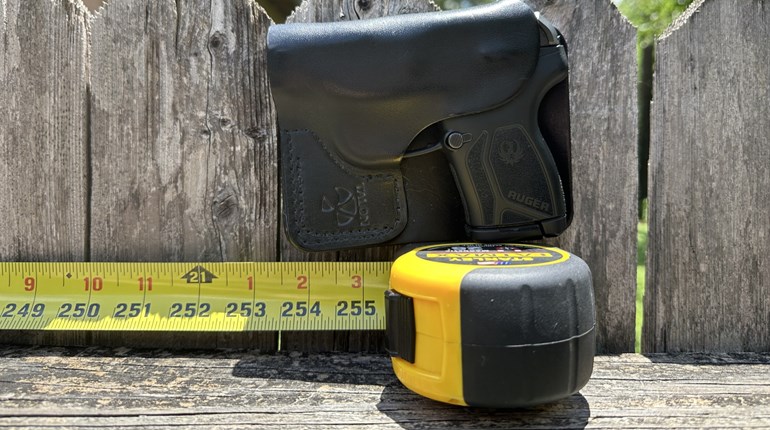
Given a lengthy career in the hard-hitting martial arts, defensive tactics, firearms and just general aging – especially if you’re over 50 - training is something you do in between injuries.
Wear and tear on your body can reach a certain point where that engine light flickers on and stays on. Some of us are already there, and if you’re not, and you work in the hard skills industry, then it’s only matter of time.
Either way, all physical skills are perishable and if you are recovering from a physical injury, should you just stop training altogether or are there other options?
First and foremost is to consult your physician or surgeon. Nothing is paramount to the sound advice of a medical professional. Unlike you or I, who are not doctors, they have seen and/or treated hundreds or thousands of similar cases and certainly have the background and experience to advise the patient about training while injured. It is your choice as to whether you follow that advice or not.
Based on the advice of your medical professional, they may recommend you do no training at all, prescribe light training, or leave it up to your personal discretion depending upon how far along the recovery process you may be.
Worse case scenario you wake up from surgery and there’s a full cast or brace on your arm. Well, sorry to say, but you probably are not going to be using it for a while so most likely you will be benched. In that case where you cannot use say your support arm or hand, then ask your doc if you can still use your strong hand to either dry fire or, if limited use an inert training firearm.
You may be pleasantly surprised to find that you are cleared hot to at least partially train. If you are denied even partial training, there are still a few options up your proverbial sleeve that you can do to maintain your readily perishable physical skills. Your options for non-physical training while injured include visualization training, video review and online training.
Visualization
Practice does not necessarily refer to the physical only. Visualization is a mental practice that can be performed without accompanying physical movement. Visualization has been proven to be equally effective as physical practice in reducing processing complexity and increasing the speed of familiarization.
In preparation for an international handgun competition overseas, multiple-world-champion competitive shooter Rob Leatham was practicing at a shooting range two days before getting on the plane for Europe. One of his students asked him about his training and what he thought of not training for the essentially two days of travel without access to a range. To his surprise Rob replied “Well, I train on the plane.” The student was shocked “They let you on the airplane with a training gun?”
The answer of course was ‘No.’ However, sitting in an airplane traveling 30,000 feet above the earth at 600 miles and hour, Leatham would close his eyes and mentally visualize his draw stroke.
The subconscious doesn’t know the difference between reality and mental visualization, it simply experiences the repetition. One trick that helps to retain your training value is your attention to level of detail.
Referencing his draw stroke visualization drilling, Rob describes his feeling the weight of the pistol in his hand, the scraping of the muzzle on the way out of his Kydex holster, the feeling of his hands coming together, the pressure of the trigger resting against the pad of his trigger finger during the press, movement of the sights in perfect recoil control falling right back onto the target. The closer you can get to the granular level, the greater the benefit.
Brain studies reveal that thoughts produce the same mental impressions as actions. Mental imagery impacts many cognitive processes in the brain: motor control, attention, perception, planning, and memory. So, the brain is getting trained for actual performance during visualization.
Video Review
Today there’s so many training videos out there at no cost or per paid subscription, that you could watch eight hours of training videos for 12 months straight and still not run out of training material. You may need to spend a bit of time digging around for your desired content and quality, but it's time well spent as all professional sports teams watch videos as a part of their overall training package.
If you know ahead of time you could even film yourself on your cell phone shooting prior to your procedure or your doctor’s orders to stop training.
Watching yourself on video is very different from watching other people on video. You can use that video to find your mistakes, or where you may need improvements or adjustments to make yourself a better shooter. Taking copious notes of your observations and organizing those notes into training drills or mental approaches you would not have seen otherwise. You could even share that video with your shooting team, training partner(s) or coaches and ask them for their opinion.
Online Training While Injured
Several firearms instructors offer professional full-course training videos which are available online. You could take a performance shooting course, or any number of training programs designed to make you a better shooter.
The number of professional training videos continue to flood the market. It’s up to you of course to decide which instructor and what program is best for you at your current training stage.
In addition to your visualization drills, video review and online training, you may be taxed with doing a little physical training to rehab your injury. Time management becomes an issue when trying to balance everything out to both manage your injury and simultaneously preserve your long term shooting skills.






































